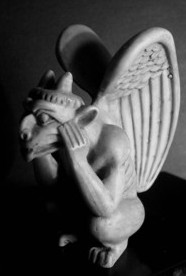I was at a conference in Rome a few years ago where people from Google explained that Catholic websites tend to punch well below their weight compared to those of other religious groups for the simple reason that they don’t link to other sites; in the digital environment as so often in the world at large today, Catholicism is a siloed landscape. It doesn’t have to be, though. Even just thinking about Irish history, and the kind of lessons we might draw from our most influential period, those centuries between the coming of Patrick and the Viking attacks when we supposedly saved civilization – we didn’t, but we did a lot – it shouldn’t take long for us to realise just how important networks and networking were to ‘the land of saints and scholars’.
That won’t typically be our first thought, of course. We’re far more likely to think of the likes of the island monastery of Skellig Michael. Famously isolated, the stone huts on the pyramidal island are dramatically inaccessible, so much so that they were perfectly cast in recent Star Wars films as Luke Skywalker’s hermit hideout. This very inaccessibility, this remoteness – the monastery is high on a rugged rocky spike that arises from stormy waters that cut the island off from the south-western corner of the Irish mainland – defines the monastery, but can too easily mislead us into thinking that this kind of community was somehow typical of Irish Christianity in its earliest centuries. Anything but!
That’s not to say that there weren’t Celtic monks who went off into the wilderness to seek God through contemplation – the Cambrai Homily, written around AD700, speaks of this ‘green martyrdom’, as distinct from the classical red martyrdom of those who died for the Faith and the white martyrdom of those who left their homelands to become missionary exiles – but we go wildly astray if we ever think of this as the norm. On the contrary: in the first centuries of our recorded history the Irish countryside was dotted with hundreds, even thousands, of monasteries, and while some certainly were discreet centres of contemplation, many others had roles that were pastoral, administrative, scholarly, and evangelising. They were platforms for outreach, and they were linked together.
Clonmacnoise, established by St Ciarán where the river Shannon meets the great road that was the Esker Riada, is perhaps the most obvious of these, but even when we think of the ostensibly remote beauty of Glendalough, we should keep in mind that though St Kevin settled in a beautiful spot in the Wicklow Mountains, he hardly did so in an obscure one; the monastic city that grew up around him is, after all, barely a mile from the crossroads of Laragh. St Cronán is famously described in his medieval biography as having moved his community to Roscrea because people couldn’t find it in its original home. ‘I will not be in a desert place where guests and poor people cannot easily find me,’ he supposedly said, continuing, ‘but I will stay here now in a public place.’
Our early lives of St Brigid show her travelling around the roads of central Ireland by chariot, praying as she went like an efficient commuter, and even helping her people in the building of a road, designed to carry chariots and wagons even across bog and riverside swamps. They describe her too as paying careful attention to how Mass was celebrated in Rome, so the prayers could change in Ireland if they changed in Rome, while contemporary letters from the likes of St Columbanus underline how letters and appeals to Rome were indeed a real phenomenon for the Celtic saints.
Roads, rivers, and letters all served to bind communities together, and communities would be aware too of their familial links – not merely because they’d often be expressions of local tribes and kingdoms, but because they’d be part of loose familial federations, known as paruchia, deriving from particular founder saints and those with whom he or she had studied. These federations could cross the sea, or even straddle the continent. Not that all was harmonious in or between these paruchia, of course – families can be tricky things, after all – but there were links, and the links mattered.
What’s more, the monastic leaders would travel to meet with each and learn from each other, and could come together occasionally in gatherings called synods. One synod from AD 697 begot the Cáin Adomnán, attempting to ban violence in warfare against non-combatants and especially women, for instance, while another, known as the Synod of Patrick, issued more than thirty rulings, including ones banning the receipt of donations from pagans and threatening excommunication against anyone who believed in vampires!
Coming from the Greek syn-odos, meaning a shared journey or even a common path, synods are things we hear a lot about in Church circles nowadays, with talk of synods, synodality, synodal paths, and synodal ways. In the end, though, we should realise that they are, above all else, antidotes to siloed landscapes, a way of helping give reality and life to the Church as a network of networks. If St Brigid helped build roads across bogs, it must in part have been because without such ways – without such common paths – our monasteries would have been isolated and ineffective. Like the proverbial lighthouse in a bog, they’d have been brilliant but useless.
If synodality does nothing more than keep people talking together and praying together and working together towards common ends, it will have achieved something. Networks matter, after all.

No comments:
Post a Comment